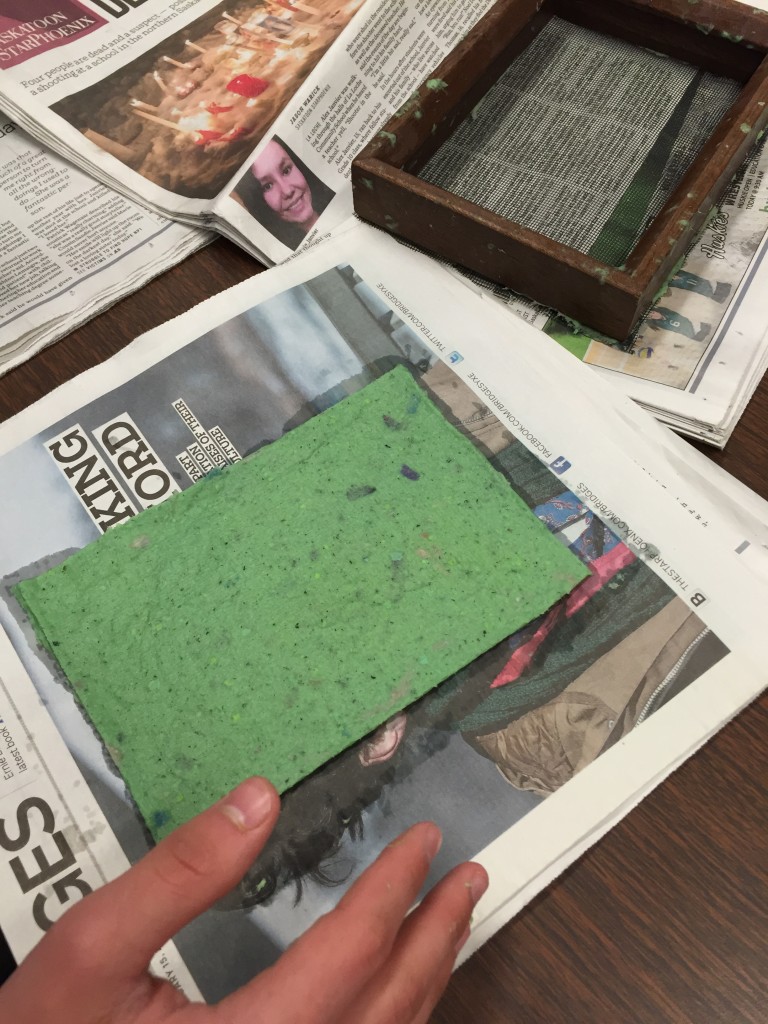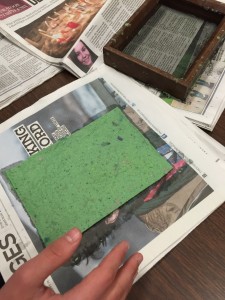Making paper from paper – revolutionary, I know – is a delightful way to learn how to make paper of any type, and once you’ve pulled sheets of paper from a slurry of pulp with a mould and deckle, you’ll be hooked. (And, if you’re doing it right, speckled with a semi-solid substance slightly resembling barf.)
Most people don’t have easy access to the wood pulp, cotton, or plant fibres to craft paper the old fashioned way, but they probably have some old paper (newsprint, looseleaf, bungled printer copy) lying around. And the process, whether in an industrial paper mill or your kitchen sink, generally remains the same.
For example, this guy, teaching fourth graders, and these folks, making washi paper from raw mulberry branches, are both on top of their respective games.
Here’s the gist: fibres, whether from rags, hemp, or whatever, get cut up (in my case, thanks to the office paper shredder) pulverized (Mom’s Cuisinart), and blended (whisk) to make your slurry, a foul looking soup of many colours.
A screen (leftover screen door repair material) stapled onto an old wooden picture frame can become your mould and deckle. Here’s a good page that takes you step by step through construction.
Move the screen through the slurry slowly, flattening the pulp as if you are panning for gold, press and dab out the water through the screen, peel from the screen, and dry. The longer it dries, the easier it peels off in one piece. If you want a nice, flat paper, couch it between heavy books or boxes, or iron it when it is completely dry. Industrial paper mills process with bleach and other additives on enormous scale, squeezing the water out with a massive press to make a sheet of paper weighing a few tonnes. These are the only real differences between your paper and theirs: size and scale. (For paper that stands the test of time, of course, you’ll need to consider the chemestry and pH balance of your slurry.)
At home, so long as you have the right suspension of pulp in water, you won’t need to add anything to help it stick together.
Once you’ve played with your slurry, and have a good consistency, you’re ready for the bedazzling stage. You can add your own frills and flourishes garlic or onion papers saved from the kitchen, pressed flowers, or simply ripped shreds of coloured paper.
If you’re looking for papermaking eye candy, check out this registry of paper artists’ work, or Bill Horne, a B.C.-based visual artist here,


